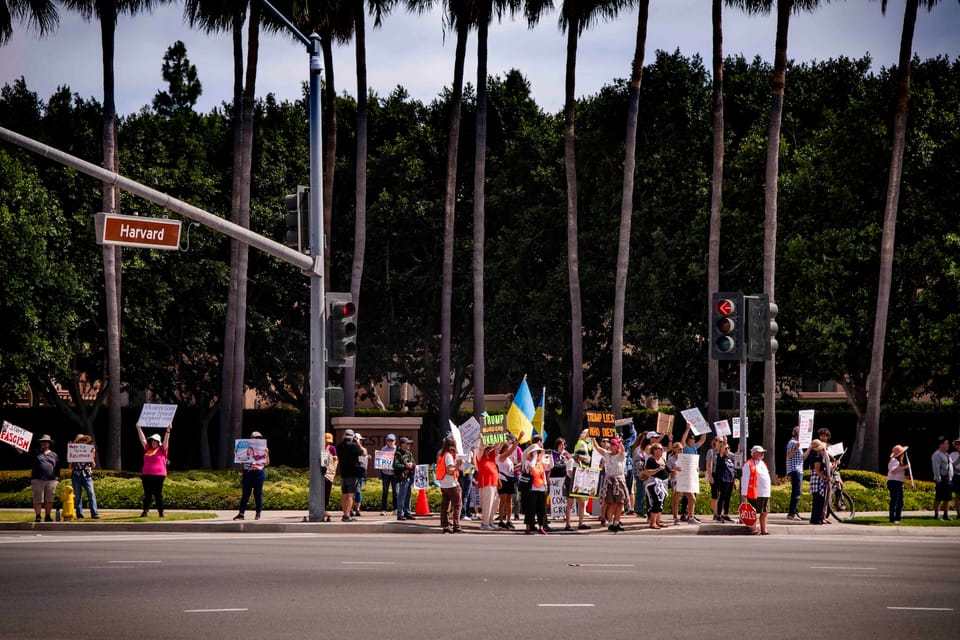Keep It Chill: How to Stay Hydrated and Safe During Summer Protests

Summer Safety
Protests and advocacy events bring together passionate people ready to speak up for justice and civil rights. While the energy is often inspiring, it's essential to prioritize safety, especially in the summer heat. Staying healthy keeps you active, present, and able to contribute meaningfully. Simple steps like staying hydrated, understanding the layout of the area, and knowing your rights can make a major difference in your experience.
Assess Risk and Prepare Accordingly
Before attending any protest, consider your personal risk tolerance and the specific context of the event. Every demonstration is different. The location, expected turnout, police presence, and local laws all play a role. Think through your comfort level and take appropriate precautions to keep yourself safe.
Important Updates
- Protesters should assess their personal risk tolerance and the context of each demonstration they are attending, and consider safety measures accordingly.
- We strongly recommend using a medical mask or other face covering to protect your personal privacy, as you are very likely to be photographed or recorded in public spaces.
Plan for Heat
Bring more water than you think you'll need. Staying hydrated prevents heat exhaustion and keeps your energy up. On hot days, dehydration can set in quickly, especially when you're on your feet for hours.
Pack a reusable water bottle and refill it at designated stations throughout the day. Add sun protection like hats, sunglasses, and sunscreen to stay protected from the elements. It might feel like extra weight, but it’s well worth it, Your health supports the longevity of the movement.
Know Your Surroundings
Familiarize yourself with the protest area before arriving. Look up maps to locate key points like cooling tents, water refill stations, bathrooms, and exits. If you're joining a large rally, identify a nearby hospital or urgent care center in case of medical emergencies.
Keep a small card or phone note with essential information, including allergies or emergency contacts. Preparation helps you focus on the protest itself rather than worrying about logistics in the moment.
Bring Snacks and Supplies
Long protests call for sustainable energy. Bring light, high-protein snacks like granola bars, trail mix, or fruit to avoid fatigue. If you take medications, make sure to pack them.
A small first aid kit with band-aids, antiseptic wipes, or blister pads can also come in handy. You don’t need to carry a whole pharmacy, just the basics to keep you comfortable and safe.
Stay Aware and Respectful
Situational awareness helps keep you and others safe. Watch for traffic, stay alert to changing conditions, and know your exit routes. Apps like Google Maps can help you mark nearby safe zones in case the crowd shifts or disperses unexpectedly.
Respect personal space in crowded settings. Being aware of how you're moving and interacting with others fosters a more peaceful and supportive protest environment.
Protect Your Identity
We strongly recommend wearing a medical mask or other face covering to protect your personal privacy. You are very likely to be photographed or recoded in public spaces.
Secure your phone. Your phone holds personal data that could be used against you or others. Before attending a protest, turn off Face ID or fingerprint unlock and switch to a 6-digit numeric PIN. Biometric data can sometimes be accessed without your consent, while a PIN offers stronger legal protection. Also, consider using an encrypted messaging app like Signal to protect your conversations. It’s free and secure. Learn how to set up Signal for secure communications.
Mindset Matters
Approach the space with calm, focus, and intention. Passionate doesn’t have to mean aggressive. De-escalation skills are powerful tools. Learn how to respond to tension without feeding it.
Many organizations, including 50501, offer conflict de-escalation trainings. We recommend taking part to feel more confident and equipped when tensions rise. Staying grounded makes room for everyone’s voice and helps build lasting movement culture.
What to Avoid
Leave weapons, sharp objects, or anything that could be misinterpreted by law enforcement at home. If you wear contact lenses, consider switching to glasses. Tear gas or debris can irritate your eyes, and glasses offer better protection.
Avoid bringing valuables that could be lost or stolen in the crowd. Keep your essentials secure and accessible so you can focus on showing up for the cause without worry.
Conclusion: Care is Collective
Safety is part of building community. Bring water not just for yourself but to share with someone who might need it. Check in on people who look overheated or overwhelmed. These small actions help everyone stay strong and supported.
Just as important: know your own limits. It’s okay to take breaks, step away, or sit one protest out entirely. Showing up looks different for everyone, and there’s no one “right” way to be involved. When we care for ourselves and each other, we build a protest culture that’s sustainable, inclusive, and powerful.
You’re here for the long haul, and that’s what movements are made of.
